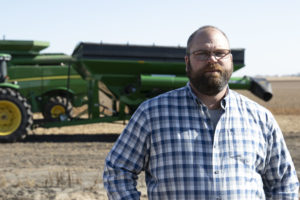
Partnerships That Drive Success
Guests: Todd Arduser, Kevin Poppel
In this episode of Channel Chat, farmer Kevin Poppel talks about the relationships and advice that have helped him find success in farming.
Listen to Episode
 Ag Over Easy Podcast
Ag Over Easy Podcast
In this episode of Channel Chat, we hear from three Channel agronomists representing Minnesota, Nebraska and Ohio. Join in to hear them discuss the unique challenges their areas are facing this harvest and learn about their recommendations for farmers facing similar conditions. We’ll also look ahead to the next growing season and discuss what farmers can be doing today to prepare for next year.

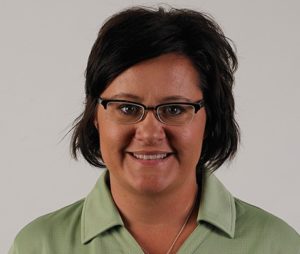
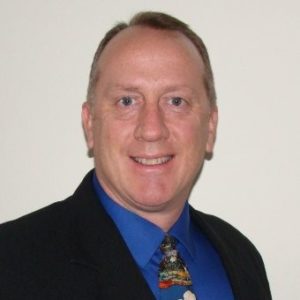
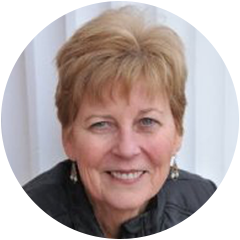
Pam Fretwell
Hi, everyone. Thanks for joining us today on our "Channel Chat Podcast", brought to you by Channel Seed. I'm your host Pam Fretwell and I'm excited to have Channel Agronomists, Tony Weis with me today, Miss Tammy Ott, and also Dave Klamforth joining me on the podcast. Today we're going to be hearing from Tony, Tammy, and Dave on what's really been unique about this harvest season and how the farmers out there can use what they learned during this past growing season to really plan for the upcoming year. So let's just jump right into it. First of all, Tony, I'm going to start with you. Let's just talk about what regions do you cover, how long have you been a Channel Agronomist, and what you're really passionate about in your job?
Tony Weis
So, Pam, I cover the Southwest corner of Minnesota and I've been a Channel Agronomist for just over two years. However, I've been in the industry for almost 26. And you know, what gets me up every morning and going is two different things. One, there's always something different going on with the change of seasons, that there's no season that's like another. So I always enjoy all of that. And you know, the second piece is helping farmers efficiently produce safe, affordable food for the world, kind of on a grander scale, one of the things that I really appreciate about what I do.
Pam Fretwell
Tammy, tell me where you're from and a little bit about yourself.
Tammy Ott
I cover the Central Nebraska area. And I've been a Channel Agronomist for about 2 and a half years but I've been in the ag industry for about 15 years total. I'm really passionate about agronomy because I love being in the field, supporting and working with our farm families that are helping to feed the world. I enjoy bringing new products and technologies to the farm to help fulfill growers' needs and address challenges that they have. It's a very challenging career but also very rewarding.
Pam Fretwell
So Dave, how about you? Tell me a little bit about yourself.
Dave Klamforth
Well, I currently support six district sales managers and six sales territories in the entire state of Ohio. This is my 12th year as a Channel Agronomist. My current seed background goes back 44 years and I've always had a passion for the crop production systems and how that all fits together with our growers. I enjoy spending time with them in improving not only profitability but efficiency in their operations and, of course, using Channel products. I'm especially patient about the next generation in production agriculture. It's a difficult time for them to get in and down to have the financial means and the will to do the work. And so that is one of my extreme patience is the next generation getting into production agriculture here in Ohio.
Pam Fretwell
It's great that I have so much diversity in where you guys are from. So tell me, first of all, Tony, is there anything unique about this harvest season in your area and how does it impact your local farmers?
Tony Weis
Like I said earlier, every season is unique in agriculture. This one has definitely thrown us a little bit of a curveball. In April we were fighting off snow storms, so our planting window was delayed well into May. Through the growing season on average to date, we've had 8 to 12 inches above normal rainfall for a good chunk of my geography. And we have large areas that have been 16 to 18 inches above normal just for the growing season. And in addition to that, the good part of it is we've had above average temperatures too, so with our delayed planting, you know, the crop is actually ready to harvest. We've started a little bit but currently, we're running about 300 groin degree units ahead of normal.
And what's interesting about it as we talk about what's unique about harvest is, a good chunk of that happened in the last few weeks. Two weeks ago we had 170 GDUs and our average is about 90. So the crop really moved along very quickly. A lot of corn black layered two weeks ago and then last week we got about four to six inches of rain across my entire geography. So the uniqueness of that for my geography is this harvest, the crop is ready to go. A little bit of harvesting was done prior to the rain, and I think if you guys are going to get back in the field again today, but for me, you know, how am I going to use this going forward? Just being out in the field, being out in plots, taking a look at our products and trying to make sure that products are handling this type of environment so that moving forward I can make good recommendations for our growers.
Pam Fretwell
And Tammy, that's quite a bit of a variance from the normal over there that he's had. Tell me about your area. What's been unique this year for you guys and how's it impacting your farmers and how's it gonna help next year?
Tammy Ott
Again, like Tony said, every year is unique and presents its own set of challenges. But this year we went through some wind and hail events this summer. Same as Tony, we were above normal rainfall in a lot of areas. We had really a cool and humid August, which brought on the presence of disease in our soybean crop. The last 10 days or so we've had above normal temperatures. It was like the return of summer in September. We've cooled down quite a bit but really the same mix of things has affected plant health and late season standability in our crop. We are facing some extremely high yields, especially in our dry land acres. And again that's a reflection of the above normal rainfall that we've had.
Our soybean crop we really going to have to manage around that disease component and scalability. We've had the presence of ... this summer, which we haven't seen for a few years. And our corn crop we're really just going to have to be evaluating that timely harvest piece. You know, these high yield growing conditions have presented us some late season stock type issues as well as those wind events that we have this summer.
Pam Fretwell
Dave, let's talk about your region and what's been happening there over the growing season.
Dave Klamforth
Well, I would agree very much with Tony and Tammy on the uniqueness of the year. That's part of agriculture and we've got to kind of learn to adapt as the season goes along. And yes, we've had above normal marine call throughout most of the state, we've had some stress areas that at a critical time did not get a lot of precipitation, but overall our precipitation is above normal, our heat unit is way above normal. And so the thing that's unique, especially for us, are two things. Number one, our yields are much higher than normal, which is very good. And then the second thing is it's dumb, moved the harvest season window up quite a bit. We've got a lot of corn that's been harvested already, although it's a low percentage of the total crop but guys are getting into corn are actually getting more sheer levels down in the teens, a lot of 20s, and into the teens, which is quite surprising.
Meanwhile, they've got soybeans that are also getting ripe very quickly. So it's going to be a quick growing season if the weather permits, we'll be able to harvest quite a bit of our crop because of the early enough of the season and the heat unit accumulation. I also agree with Tony and Tammy in that, you know, the season has presented two challenges with disease in soybeans. We've seen a little bit of pod, stem blight that could affect grain quality and in corn, we've also seen some ear rots and molds on a small basis but could be impacted in certain areas. And then I would agree with the stock quality issue. That's something I think our growers need to focus on to prioritize harvesters and stock quality and grain quality due to the fact that we did cannibalize some of those stocks during some of those stress periods throughout the growing season. And we'd cannibalize the stocks simply because we've laid out quite a yield challenge with the size of the ear and then the plant was trying to fill every kernel. So good yields, stocks could be questionable in some areas. But a unique year but overall pretty good year here in Ohio.
Pam Fretwell
So now, Tony, let's talk a little bit about the agronomic preparations that the farmers can make really for next year now. What kind of advice would you give to your farmers?
Tony Weis
Again, as I said, we've received a fair amount of rain just recently. I think one of our challenges this year is going to be actually getting the crop out of the field, as Dave and Tammy mentioned, and it's not unique to them. We've got the harvest season that's approaching us much more rapidly than we probably thought would be. And so we've got a lot of stuff ready to go but with the rains we've had, it's going to be a struggle to get out across the fields. And so one of the things I think we need to be watching is minimizing field traffic and compaction with the wetter soils that we have, making sure that we're not doing too much to our soils so that next year we don't see the impacts, you know, of a left fallen.
There's obviously a balance there of, you know, you've got to get your crop out and trying to protect your field. Both things you can do by maybe adding tracks or duals and making sure your tires have the right air pressure. Also, things like, don't feel your grain cart as full as it will go. Trying to keep the weight off of the field when the field conditions are as wet as they are.
Pam Fretwell
Tammy, tell me a little bit of what you think that you're going to be advising farmers about as they go into next year's preparation.
Tammy Ott
Well, every year is different, like we've talked about and next year won't be the same as this year. But I think there are really some things that we can focus on from a hybrid selection in a plant perspective. And we're really going to be focusing in Nebraska on that plant health component. What type of seed treatments can we be thinking about for next year to really help set us up for that management of risk and to help us manage our return on investment with our growers?
Pam Fretwell
So Dave, tell me how you think that your farmers are going to be thinking about next year and what kind of agronomic things do they need to be thinking about?
Dave Klamforth
So I think Tony and Tammy have brought up some excellent points but the four areas, I think, well, they need to focus their attention as they start to plant for 2019 would be number one, fertility management, especially nitrogen. We've seen with the range on the growing season we've had this year, we've seen some differences how nitrogen is managed and not just the amount that the timing of those applications. The other foretelling issue that I'm seeing is some potassium deficiency showing up in both corn and soybeans. So I think growers need to take a critical look at the potassium levels in their testing methods to make sure that they have adequate amounts care for next year's crop.
The second area would be seed treatments and how they can better establish a stem in both the corn and soybeans. The third area would be weed control, with the amount of heat and moisture we had this year, we had some weed control issues that they need to make sure they correct for 2019. And then the last area would be disease management in both corn and soybeans. Again, with the weather conditions we've had, we've seen some incidents of disease pressure, and I think volatile and hybrid selection will be important as well as considering a fungicide treatment during the gardening season.
Pam Fretwell
So now, Tony, as growers start thinking about disease and pest management for next year, are there any new technologies that really can help protect against those pests or diseases in your area?
Tony Weis
So one of the things we did experience in Southwest Minnesota this year is the onset of some FDS. It was a little bit late in the season but it still impacted yields in some fields. And so when you think about soybeans, number one, you think about yield and a lot of times folks look at their herbicides system as well when you talk about soybeans. But one of the key things for us this year from a sudden death syndrome perspective, making sure that you've got varieties that have fairly good tolerance to that when you think about next year. And I know a number of our roundup ready to extend varieties that were selling in Southwest Minnesota have very good FDS tolerance and I think are going to perform extremely well because of that this fall.
Pam Fretwell
Tammy, tell me about your area, about that disease and the past management programs that you're thinking are for next year. Is there anything in particular as far as some new technologies that you can recommend to the growers out there?
Tammy Ott
Yes, there are two new technologies that we're bringing into the Channel brand that I'm very excited about. The first one of those technologies is the NemaStrike technology, brand new novel mode of action that we're bringing into the industry to really help growers manage that nematode test. We have a lot of areas that are standing in the central part in Nebraska and we know we have a nematode issue and now we have a solution for that. The second thing that we're excited about to help us to control those areas that are heavy pressure, our Western bean cutworm year after year is the perceptive technology.
Pam Fretwell
Dave, Channel just launched a new disease product line up called Channel Protexus. Now is that something that could be beneficial for growers in your area?
Dave Klamforth
Absolutely. The Channel Protexus products have been selected for their extreme tolerance and in some cases mild resistance to our major blight diseases. That being gray leaf spot running quarterly by southern rust and anthracnose stalk rot and Goss's wilt. And so by selecting products from the Channel Protexus Program we will be able to better manage these major diseases and, again, improve profitability and efficiency in corn production. The other new technology that I think it's exciting that has already been mentioned is NemaStrike technology, especially in soybeans. Here in Ohio, we have a lot of cis-nematodes that attack our soybean crop and so I think this is going to be a great addition to add to our seed treatment.
Pam Fretwell
Now as we're speaking about harvest, don't forget, you can enter the Channel Placed to Perform contest for a chance to win a weekly prize along with a grand prize of an outdoor adventure pack. Head over to Channel.com/placedtoperform for the official rules and entry instructions. Thank you to Tony Weis, Tammy Ott, and Dave Klamfoth for joining us today. I hope you all learned some great tips for a successful harvest season as well as some ways to prepare for the next growing season. And if you've got any questions about any of the topics are technologies that we covered today, make sure that you reach out to your local Channel Agronomist or Seedsman, or you can even visit the website, Channel.com.
As we get further along in the harvest season, please stay safe out there. You can learn more about this podcast at ChannelPodcasting.com. Make sure to subscribe on iTunes, Stitcher, Google Play, or Soundcloud so you'll never miss an episode. Thanks, everyone.

Guests: Todd Arduser, Kevin Poppel
In this episode of Channel Chat, farmer Kevin Poppel talks about the relationships and advice that have helped him find success in farming.
Listen to Episode
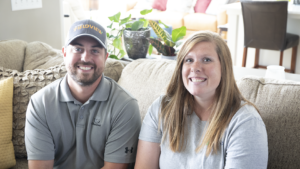
Guests: Colby Woods, Jessica Grubbs
As technology in agriculture continues to evolve, Channel Seedsman Colby Woods wanted to get ahead of the pack and offer drone scouting to his farmers in Eastern Nebraska. We caught up with Colby in Wahoo, Nebraska, along with Sentera Sales and Training Specialist Jessica Grubbs. Listen in this episode of Channel Chat.
Listen to Episode